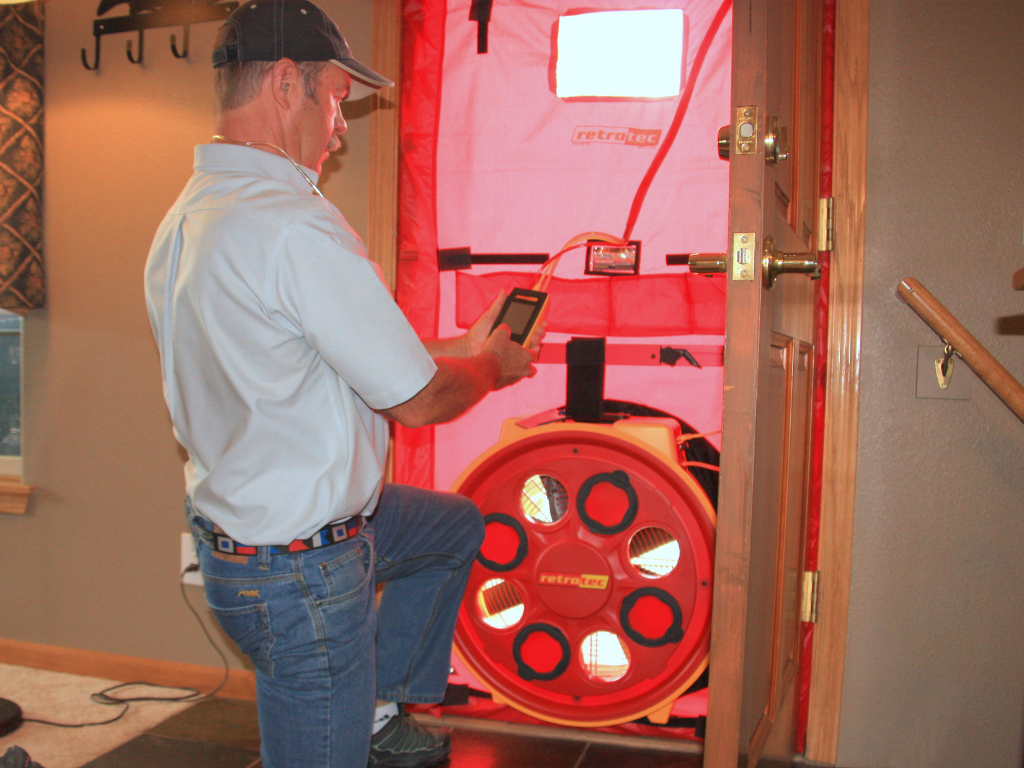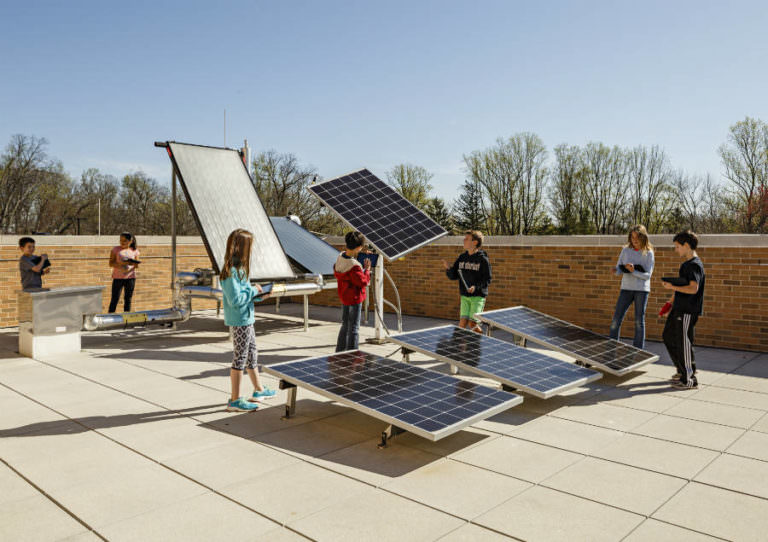OCTOBER 26, 2015 BY
Yesteryday’s sold-out 7th Annual Green Building Tour was as inspiring as always. In the “mountain modern” theme, the three homes toured included a LEED version 4 home, a 1958 remodel, and a technology-boosted home that used LEED, Energy Star, Passive House, Built Green, HEED, and VERA components.
At the 480 square foot 1958 remodel apartment, originally built by Eugene Sternberg (who also designed the old Yampa Valley Electric building), we were entertained with stories by oldtimer Linda Kakela, who knows much about the original build as she has owned one of the units for 3 decades. We toured an original first, virtually untouched, with the galley kitchen in the entryway complete with RV-like features such as a fold down stovetop and tiny fridge and oven. Then owner and contractor Bradley Bartels of PureBuilt Construction toured us through the new remodel, where the kitchen had been moved into the main living area, that has spectacular views from upper 11th street down on downtown and Emerald Mountain. Original features included an all-electric design (much cheaper then) and “Butterfly” roofing for a unique snow melt design. Bartels’ new features include heated flooring in the bathroom, smaller energy efficient appliances, high R-Value windows, upgraded ceiling, and an LED fireplace. The smaller appliances and overall design of the room was important, “it comes down to every inch when you’re working with 480 square feet,” Bartels noted.
The Wright house is one of four LEED version4 for Residential homes in the country. Adopted (reluctantly) in 2012 by the US Green Building Council, LEED v4 is no small task to accomplish. Usually deterred by the incurred admin costs of the certification, homeowners often adopt all of the requirements, but don’t finish the certification. Because Adam Wright is a LEED accredited architect, the certification was very important to him and his family to accomplish, to further the importance of Green Building. Upon entering the first thing you notice is that this brand new house doesn’t have any of the “new house” odors – those sweet smelling chemicals that can affect the health of the family who dwells inside. Wright achieved this through natural features such as VOC and formaldehyde-free cabinetry, wool carpet and floor mat, and no-VOC paint. Wright also used Fins Tin, a regular on our Green Building Tour, for the home’s ERV – energy recovery ventilation system. An upgrade from the former HRV (heat recovery ventilation) systems, the ERV system not only recovers outside air to keep the interior environment fresh, but it also adds humidity to the house to avoid it from drying out in our mountain climate. Owner of Fins Tin, Jim Finegan, referred to this as “the lungs of the house,” giving a great visual to the importance of allowing a house to breathe – something that the new tighter, energy efficient homes desperately need, and sometimes unfortunately go without.
The Conner/Hoff home was the largest home on the tour, and most technologically impressive. The “Great Compromise,” as owner and engineer Scott Conner called the home, is a mix of designs and give-and-take priorities. They looked at several design styles for the efficiency of the home including Passive Solar, LEED, and Energy Star, and after 16 months of performance analysis, Conner proudly boasted that the home uses 37% of the energy that a traditional home uses and their electricity will soon be a net-zero once the small 2.8kw solar system is completed. 100% of their lighting is LED, and the home is on the VERA Control system, which monitors and maintains every energy-using aspect of the house – from the 50 watt water heater to the motion sensor lighting in the closet. Every precaution of the homes performance was taken, right down to analyzing 6 different color tiles for the living room to see which color absorbed the most heat – the rest of the main room’s design motif was modeled around those tiles. The Conner/Hoff home is a model for energy efficiency.
This tour also included a brief tour and presentation on the Routt County Justice Center and its 165 solar panels which have produced $100,000 in return to the facility thus far.
The handout given to attendees can be viewed here http://yvsc.org/wp-content/uploads/2015/10/2015-GB-Tour-Handout.pdf
2015 Tour photos
Thanks to our 2015 Tour Sponsors



















